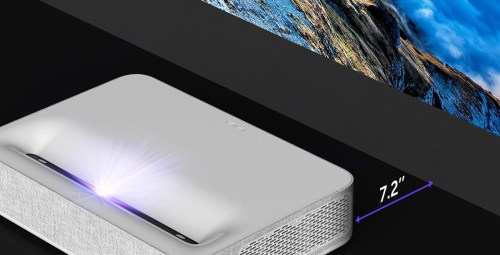
It’s quickly becoming apparent that laser projectors — historically the exclusive tech of commercial cinemas — are one of the hottest trends for the home in 2019. This year, CES is home to several new models from brands such as LG, Hisense, Optoma, and Vava. Yeah, we had to google that last one too. Though it’s the newest kid on the tech block by far, having launched its first product as recently as 2015, it’s aggressively growing its product portfolio, which now includes a 4K laser projector.
More CES 2019 coverage
- Samsung’s blistering 219-inch Micro LED TV will cook your eyeballs, blow your mind
- LG’s roll-up OLED TV is every bit as magical as you’ve imagined
- Samsung Galaxy S10 to launch February 20: Here’s everything we know
- Thousands of products showed up at CES 2019. These were the best of the best
So how can a newcomer expect to compete with the likes of LG, a brand that has established itself at the very highest levels of TV quality, and Hisense, a company that occupies third place worldwide in terms of TV sales? By offering a 4K, ultra-short throw (UST), HDR-capable laser projector that can pump out 2,000 ANSI lumens, with projected images sizes that can reach 150 inches. Oh, and then there’s the price: $3,500. Not bad for a laser projector that also packs a 30-watt Harmon Kardon DTS-HD sound system and an Android 7.1 OS — though not Android TV. It even has an interesting safety feature: It will dim the intensity of the laser light when it senses someone approaching the unit, so as to avoid unintentional eye damage.
Though the Vava uses commercial laser tech known as ALPD 3.0 (short for Advanced Laser Phosphor Display) with a DLP chip, it can’t quite match Hisense’s impressive color gamut capabilities or brightness, which exceed all of the current video standards. Not that it’s reasonable to expect that it would. There’s no way a $3,500 unit could keep up with a triple-laser model that’s expected to cost as much as $16,000. In fact, the Vava falls significantly short of Rec. 2020, the color gamut spec used by most 4K HDR TVs, falling back on the much older Rec 709.
Though its resolution and brightness are both modern, its color palette is stuck somewhere in the 1990s. It’s an unfortunate downside to what otherwise looks to be an good projector, at a good price. The competition is fierce in the newish laser projection space, and it’s possible that by CES 2020, there will be many more manufacturers offering products. Perhaps even some that have 8K resolution.
Editors' Recommendations
- What we want to see from the next Apple TV 4K
- Samsung’s new 98-inch DU9000 4K TV is just $4,000. Can it beat TCL and Hisense?
- Vizio’s first 86-inch 4K TV is coming soon, for $999
- Belkin drops a $50 mount for iPhone video calls on Apple TV 4K
- If you don’t see CBS in 4K on YouTube TV, try this